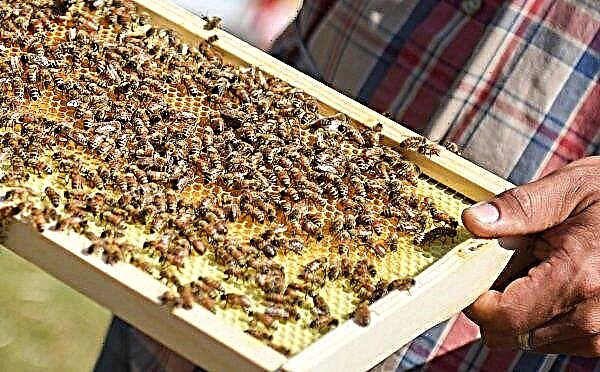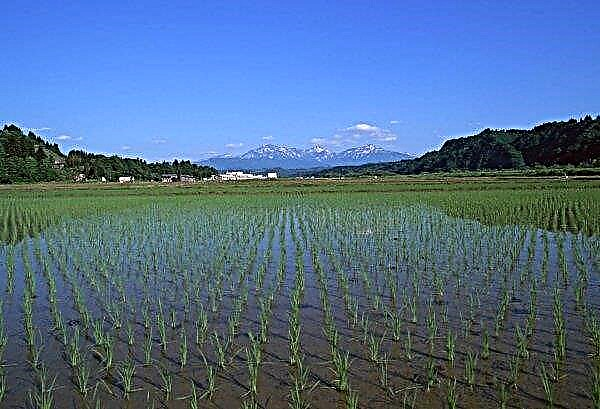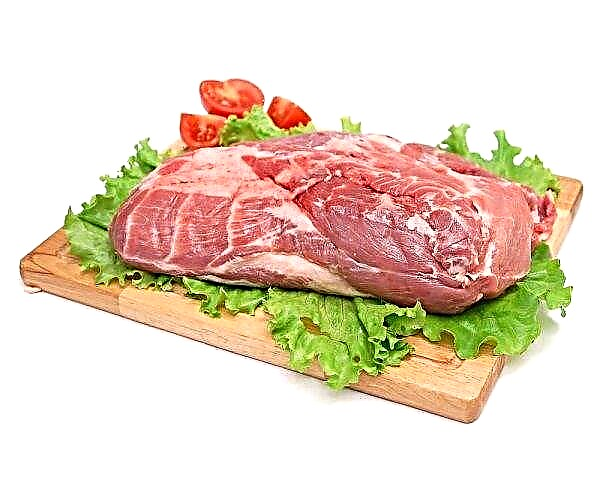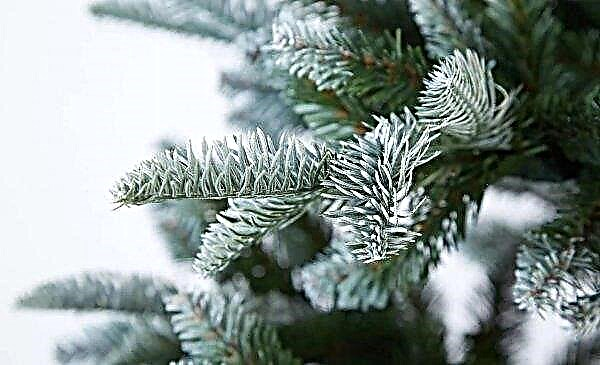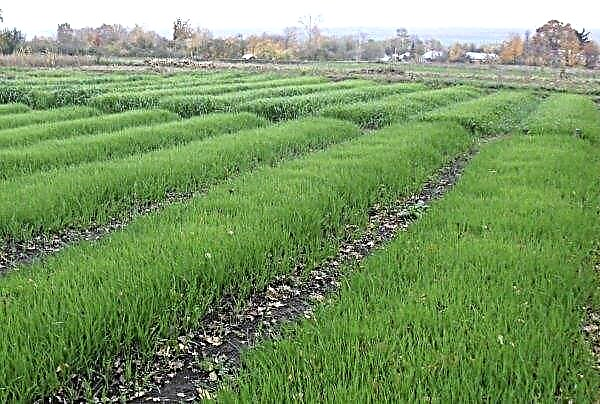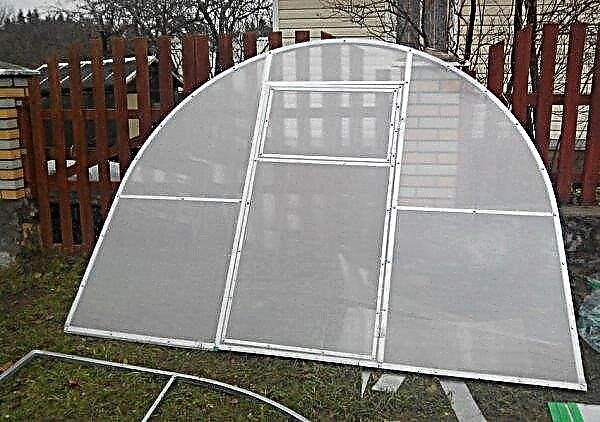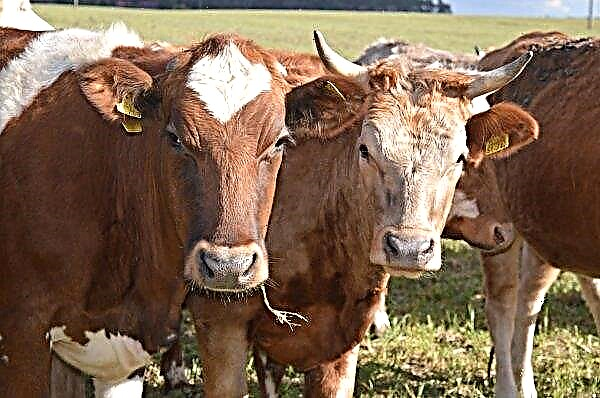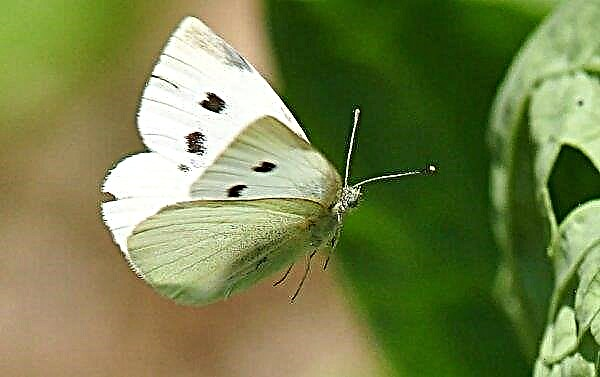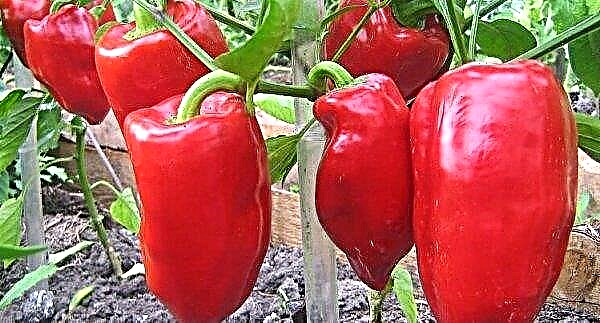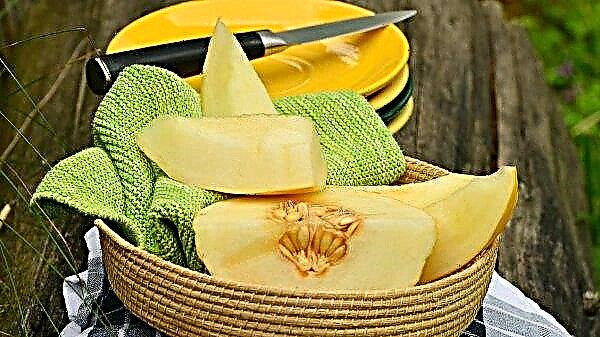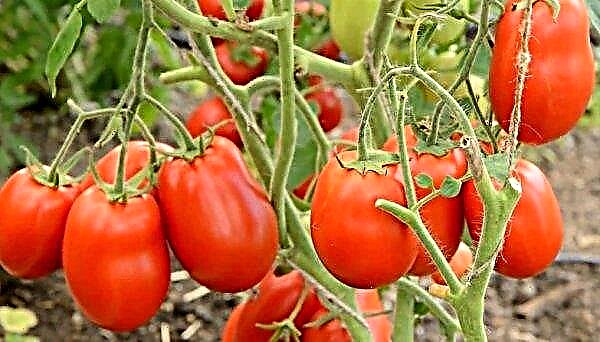Thuja Danica (Thuja occidentalis Danica) is often used in the design of the landscape due to its small size and aesthetic round shape. It grows well in the open ground of the middle strip and fits perfectly into the design of the alpine hills, effective in arranging green borders. From this article you will find out what the thuja Danica looks like, what are the features of its cultivation and application in landscape design.
Grade description
This plant crop belongs to the dwarf variety of western thuja. This variety was bred in Denmark in the middle of the 20th century, for which it got its name. An adult plant has a height of 0.5-0.8 m and 1 m in width. This plant crop grows slowly, so it does not require frequent pruning. Annual growth is about 5 cm in height and 4 cm in width.
 Danica has a regular shape in the form of a small ball, which does not change during growth. The crown has a dense structure with soft needles to the touch.
Danica has a regular shape in the form of a small ball, which does not change during growth. The crown has a dense structure with soft needles to the touch.
The coniferous coating is evenly located on branches that grow vertically, forming the shape of a ball in a natural way. Throughout the season, the thuja holds a rich green color, which has a certain glossy sheen. There is also a variety of Danica with yellowish needles (Aurika).
This thuja does not grow fast, but aboutIt belongs to long-living species of vegetation - its age can reach 200 years. In these neat bushes, reproduction occurs mainly by cuttings, therefore, small cones (up to 6 mm) of brown color are extremely rare on them.
Danica is a frost-resistant variety and is able to tolerate frosts down to -30 ° C, but loves good lighting. In shaded areas, its saturated color fades, and the bush loses its regular shape of the ball. By autumn, the coniferous coating acquires a brown hue and turns green in the spring.
Did you know? According to Feng Shui, thuja branches brought into the room expel evil spirits from it.
Use in landscape design
Due to the beautiful low spherical shape, Danica's thuja is often used in landscape design of garden plots. She looks unusual in group landings. From it low hedges are made along the alleys, beautiful green borders. These spherical neat bushes can be grown in tubs and placed near buildings for decorative decoration. Containers can be rearranged in any order, forming different compositions. In the tub they are taken out to a loggia or terrace for landscaping.
Containers can be rearranged in any order, forming different compositions. In the tub they are taken out to a loggia or terrace for landscaping.
Danica can be used to create alpine slides, or planted in solitary order. Often this thuja is planted when arranging a personal or country plot to design a patio (recreation area). These dense balls tolerate a haircut and they can form different bizarre shapes (animals, hearts, etc.).
Also check out

They can be planted with other coniferous plants, as well as with barberry, purple coneflower, lilac and plants with a stem system, whose roots go deep and do not interfere with the surface roots of the arborvitae.
Thuja juicy greens goes well with bright roses; In addition, these plants have the same soil composition requirements.
The small ball of thuja Danica looks spectacular in combination with coniferous trees that have a columnar or pyramidal shape.
With their help, you can create a triangle that will decorate part of the territory well. For this purpose, you can take the thuja Smaragd - its higher crown in the form of a cone will beautifully harmonize with the ball of Danica.
Landing rules
Thuja seedlings are planted in the spring or summer, so that they begin before the onset of frost. To do this, choose well-lit areas or partial shade - in shaded areas they lose their aesthetic appearance. This plant crop is not picky about the soil, but grows better on light nutrient soil with an acidity of 4.5–6 pH.
Groundwater should not be located close to ground level so that the root system does not rot, as this can lead to the death of a plant crop. The site should be well protected from gusts of northern winds.
Important! The root neck should not be deepened - it should be located at ground level. Otherwise, the plant will develop poorly and may die.
Planting seedlings in a permanent place is best done in the evening or in the morningwhen there is no solar activity. For planting along the alleys as seedlings, seedlings are planted at intervals of 0.3 m - in this case, as the thuja grows, it forms a beautiful green fence.
When planting in a single specimen, thaw is placed at a distance of 0.5 m from other plant crops, which allows you to form a smooth, neat green ball.
Video: landing thuja Danica
When landing, perform the following actions:
- They dig a hole depending on the parameters of the root system: it should be slightly larger than the straightened roots. As a rule, the depth is 0.7-0.8 m.
- If the soil is dense, clayy, at the bottom lay a drainage layer of gravel or broken brick at least 15 cm.
- Then prepare a nutritious soil mixture. For this, the dug soil is mixed with mineral fertilizers and organic matter.
- A little soil is poured into the pit and a seedling is placed.
- After they gently fill it with earth, slightly tamping it.
 After disembarkation, abundant watering is carried out and the area around the crown is mulched. Peat, compost and sawdust are used as mulch.
After disembarkation, abundant watering is carried out and the area around the crown is mulched. Peat, compost and sawdust are used as mulch.
Care Features
In order for the thuja to please with its green and magnificent form, it is necessary to organize proper care for it. This plant must be properly moistened, nourished and trimmed. Young specimens need help to winter.
Watering and feeding
The first time after planting seedlings, it is necessary to carry out regular watering, especially in hot weather. Under each bush pour 10-20 liters of water. It is recommended to loosen the soil afterwards in order to improve the flow of moisture and oxygen to the root system. It is worth noting that you need to loosen no deeper than 6-7 cm, since the roots of these conifers are located close to the ground level.
Important! Thuja is resistant to many diseases and pests, but can be affected by spider mites, leafworms, moths, thuja loboids and scale insects, as well as fungi. Therefore, every six months it should be inspected.
In dry weather, thuja is useful to sprinkle with warm water. In order for the needles to have a saturated green color, mineral fertilizers (ash, nitrate) must be introduced from spring. Organic is also good. In spring, nitrogen-containing fertilizers should be used, and in summer, nitrogen-phosphorus fertilizers. Since August, potassium is introduced instead of nitrogen to prepare the plant culture for the winter period.
 Of the ready-made mixtures with nutrients, Kemira Universal or special dressings for conifers are suitable. They can be purchased without any problems at any garden store.
Of the ready-made mixtures with nutrients, Kemira Universal or special dressings for conifers are suitable. They can be purchased without any problems at any garden store.
Trimming and Shaping
Due to the slow growth of shoots, the thuja Danica does not need frequent pruning. It is only necessary to carry out pruning in the spring for sanitary purposes - to remove dry and damaged branches, as well as yellowed needles.
It is important that coniferous branches do not touch the soil., as this will cause a rotting process, so be sure to trim the lower shoots. It is not necessary to do forming pruning, since this variety already has a beautiful shape.
Shelter for the winter
Thuja Danica has high winter hardiness, but it is necessary to protect young seedlings in the cold season with spruce branches. This will protect them well not only from the cold, but also from rodents, which can damage the plant culture by choosing it for wintering.
 To protect the needles from sunburn in early spring, it is recommended to cover the bushes with burlap or other suitable material that allows air to pass through.
To protect the needles from sunburn in early spring, it is recommended to cover the bushes with burlap or other suitable material that allows air to pass through.
In winter, you need to shake off the snow from the branches, as it can turn into ice, and ice crystals refract the rays of the sun well. If, nevertheless, an ice crust has formed, it is better to gently fill it with soil or peat.
Did you know? Ephedra are considered longevity champions. The oldest trees are recognized as intermountain spinous pine trees from North America, which grew about 3 millennia BC.
It is easy enough to grow Danica and take care of it, as this plant culture is unpretentious. Its beautiful spherical shape will decorate any site or alley. Of course, you have to wait until this conifer grows into a beautiful ball, but the thuja can grow in one place for more than 100 years.

